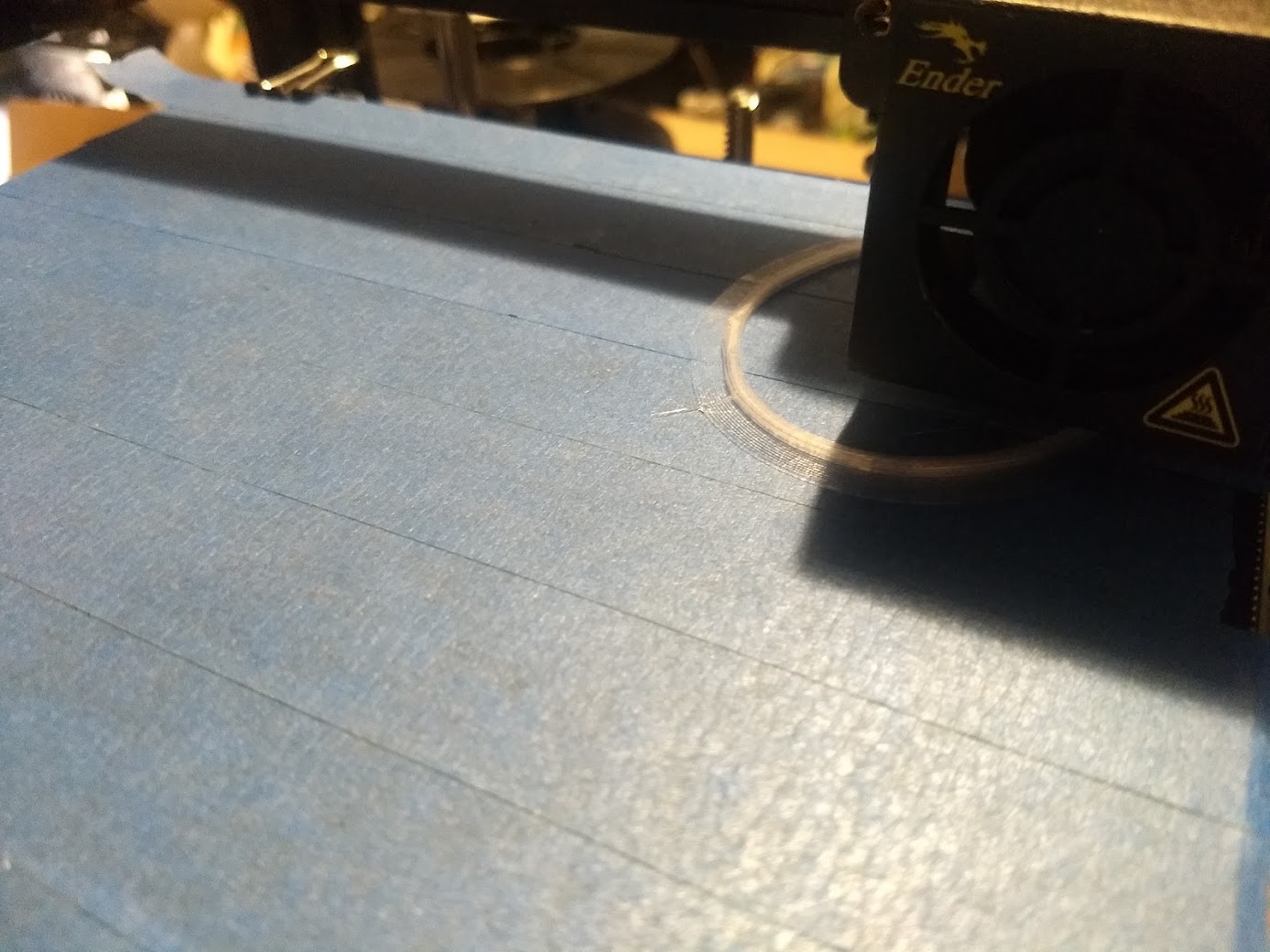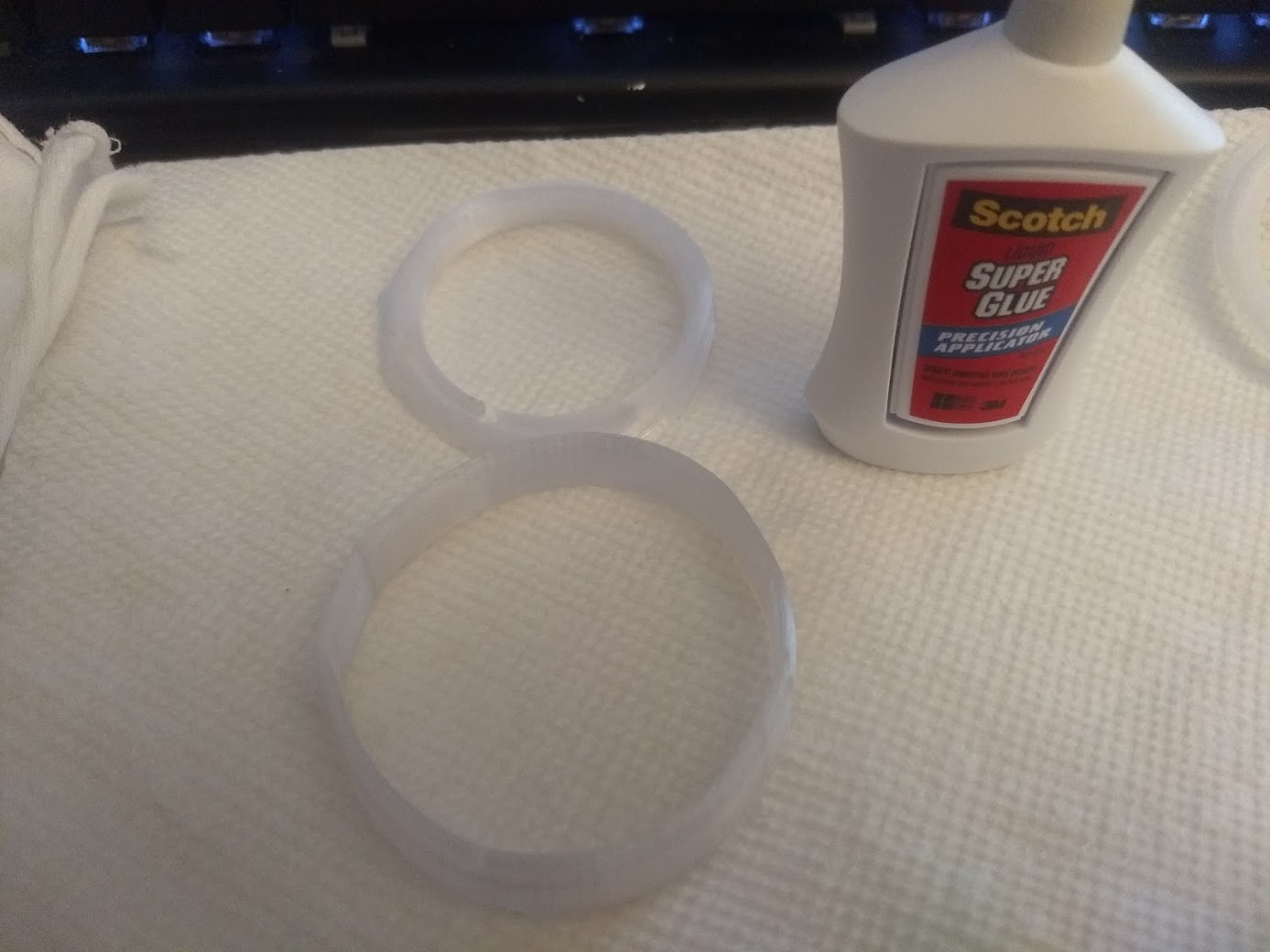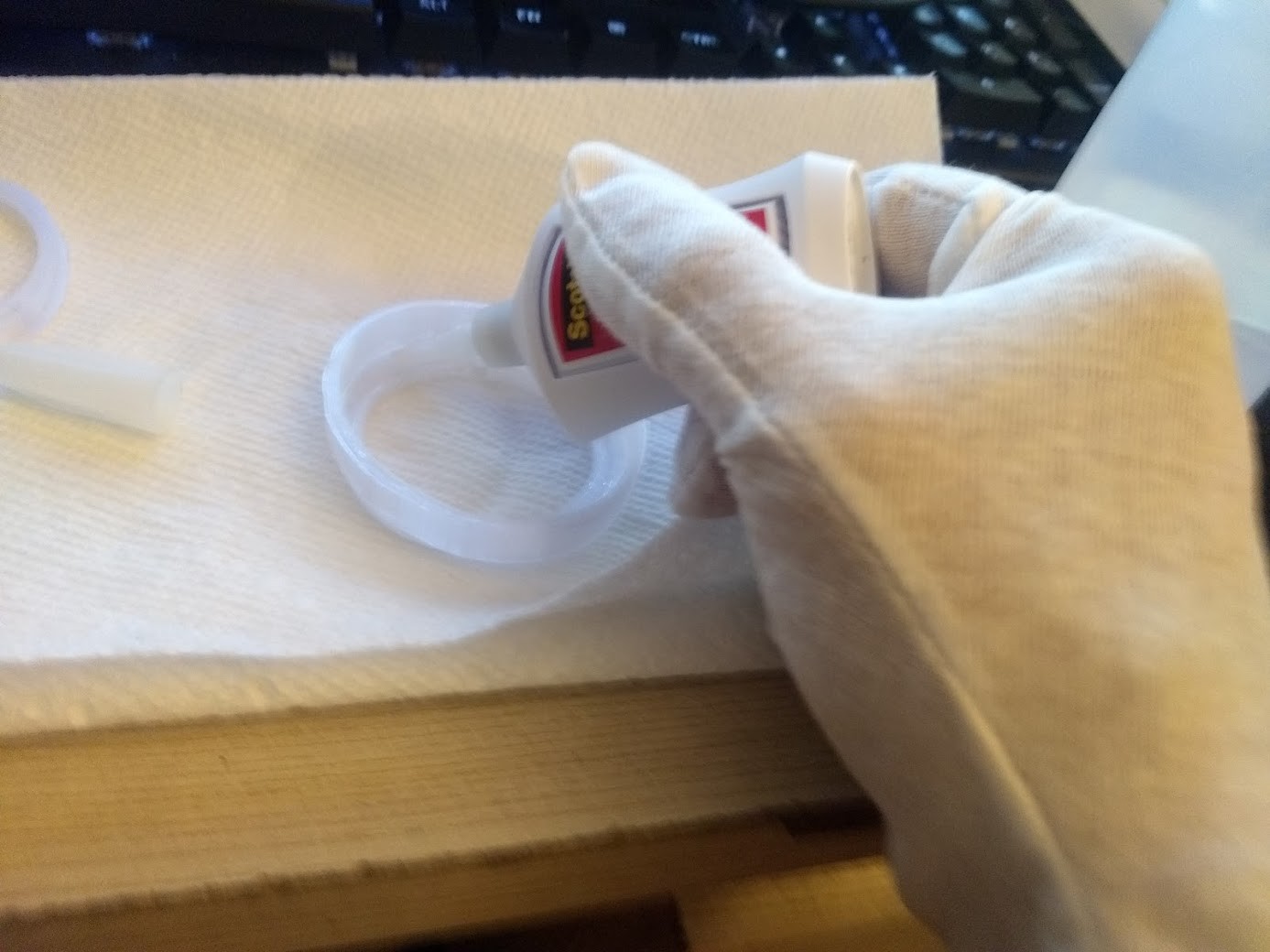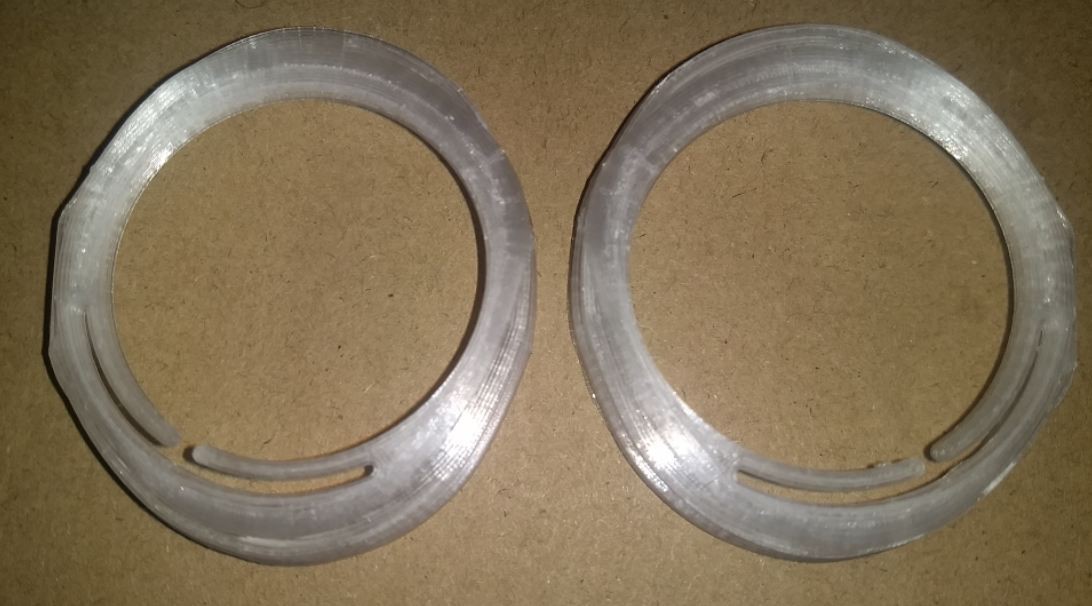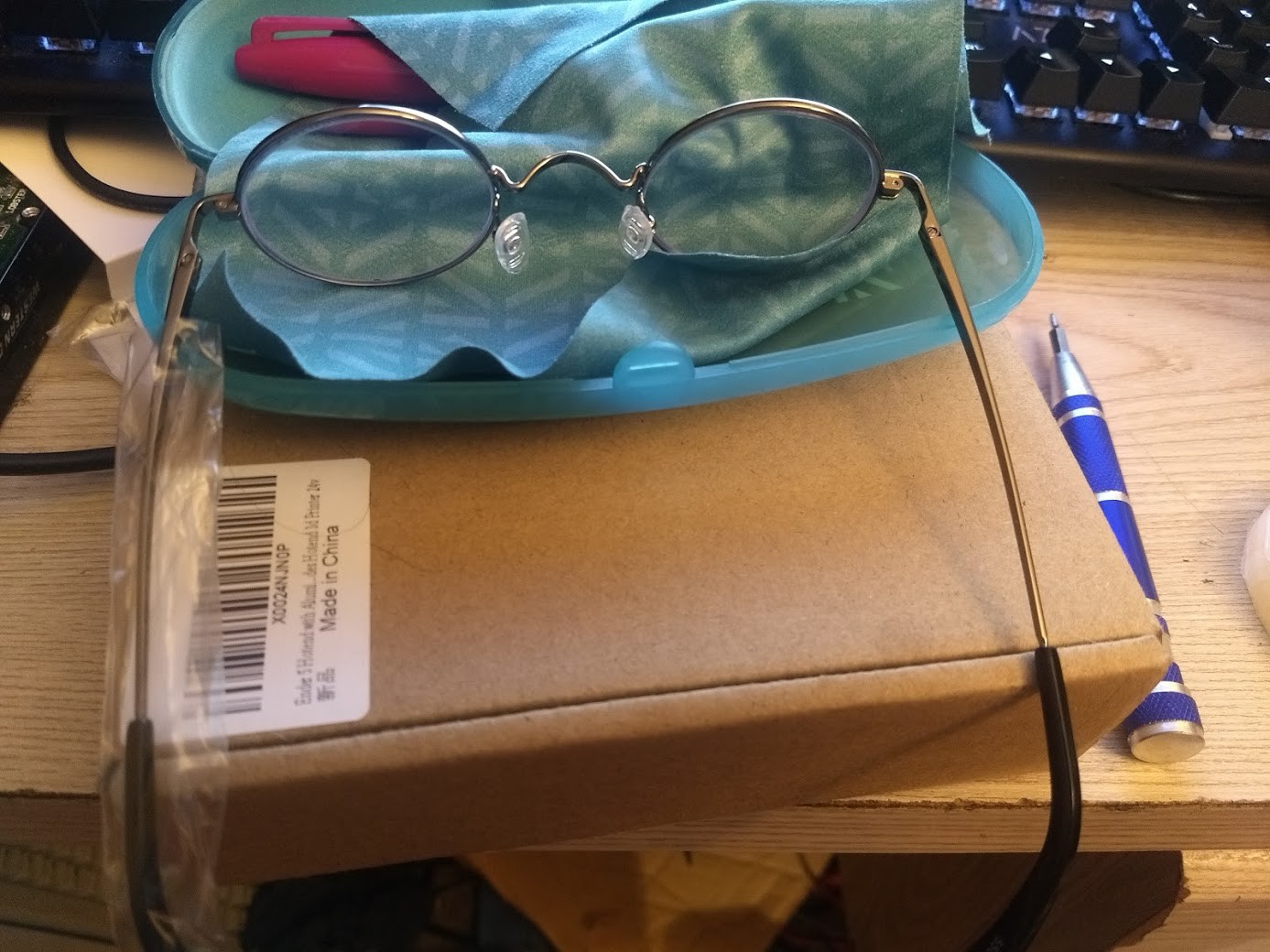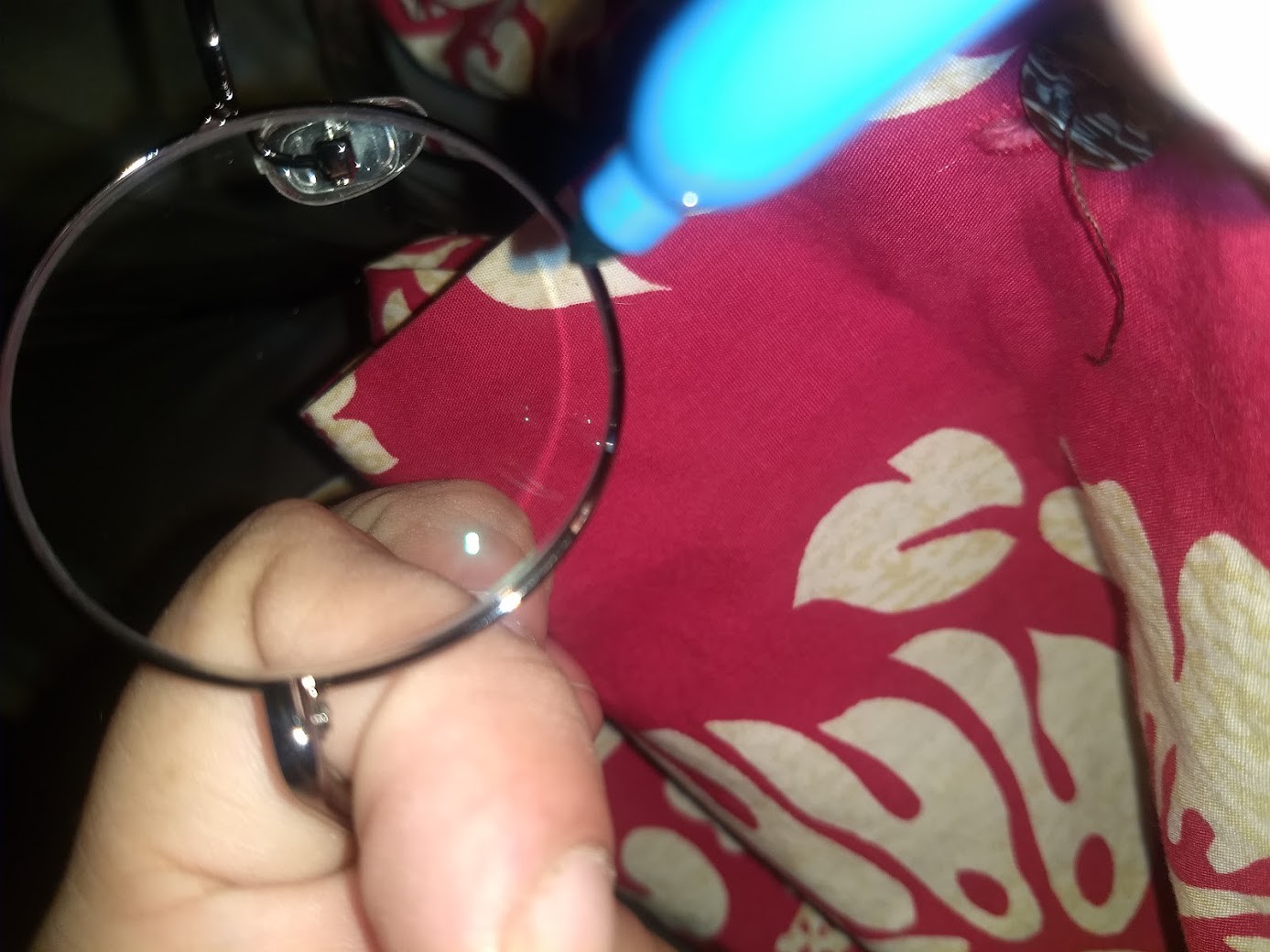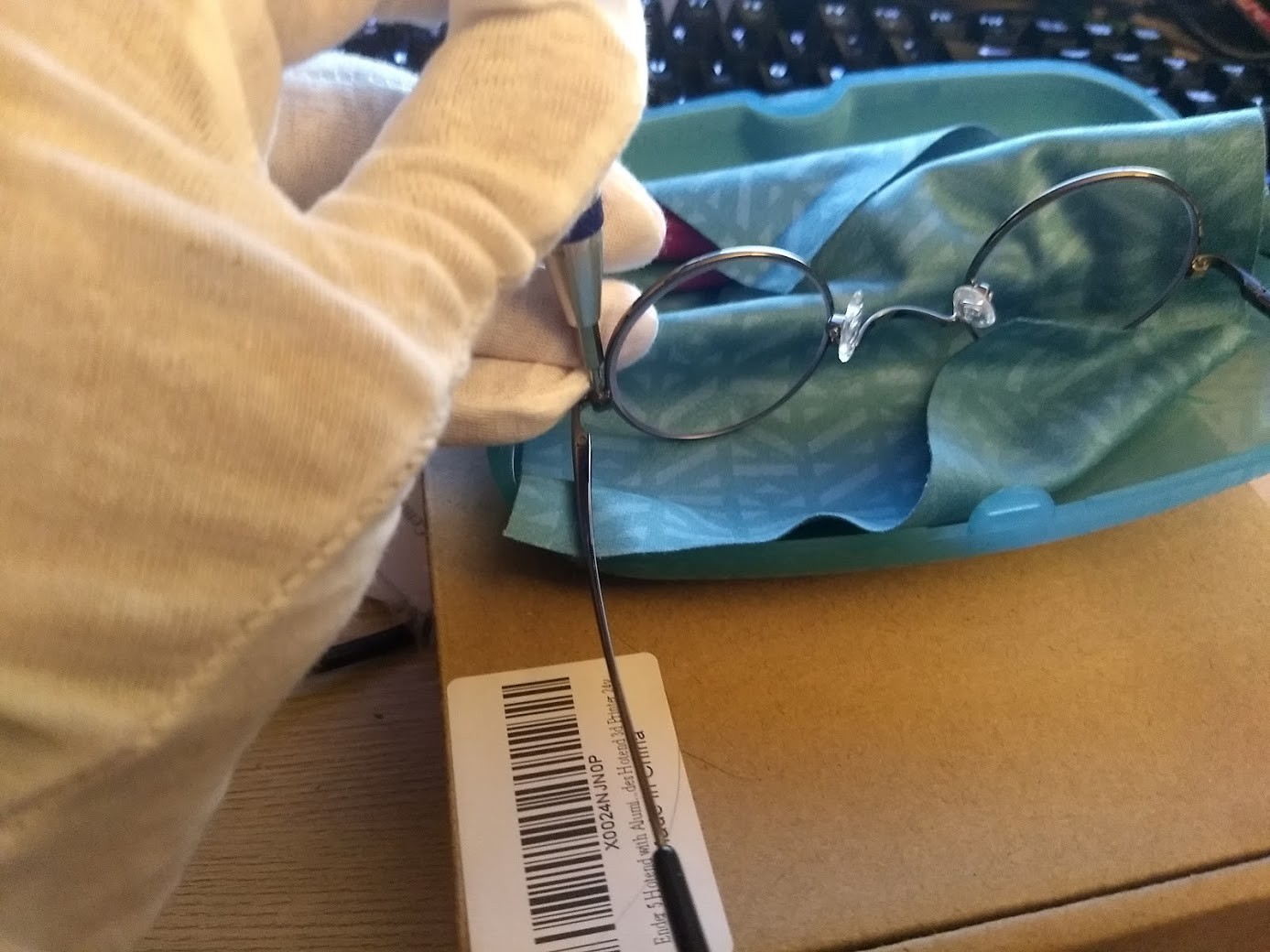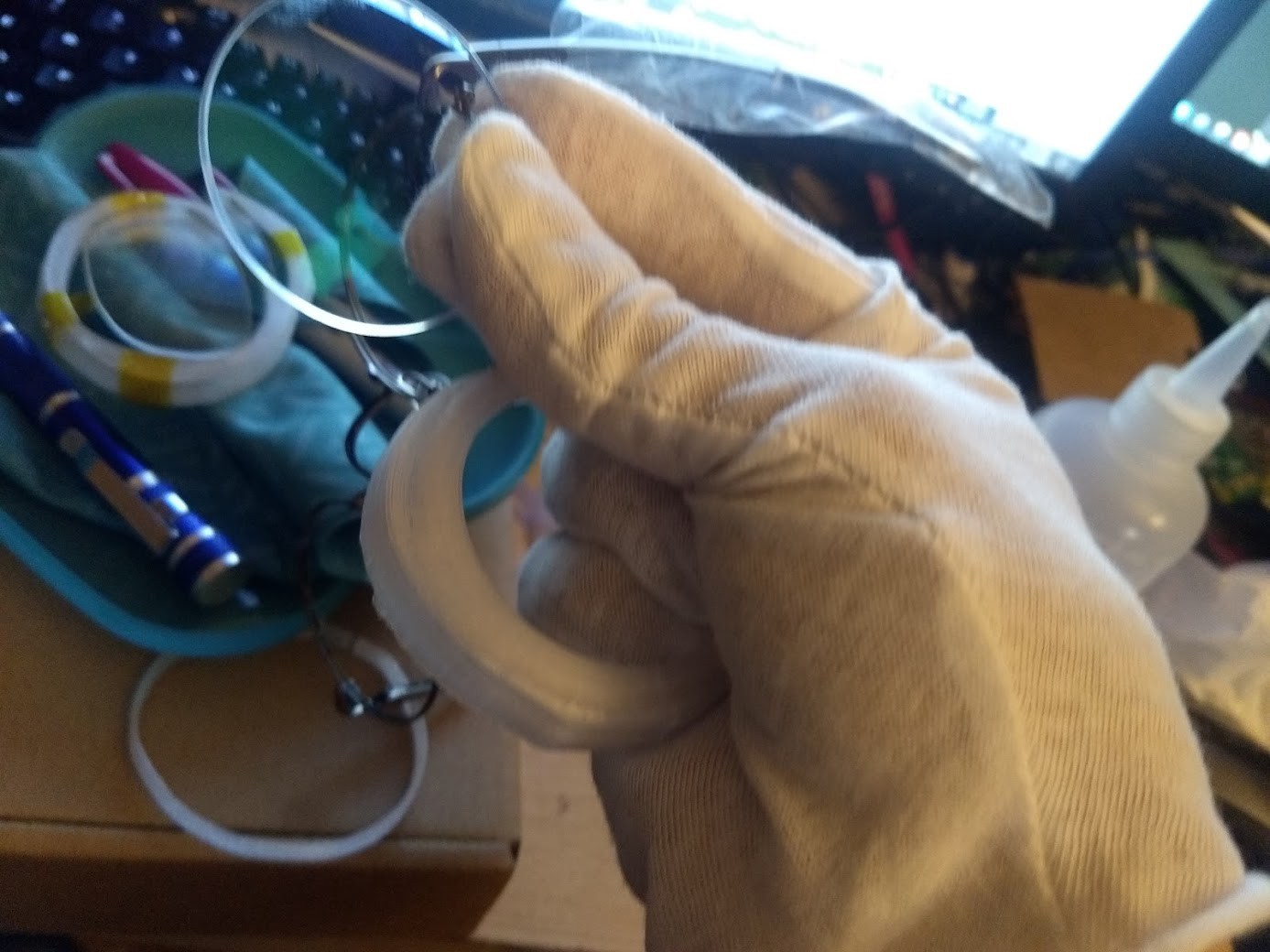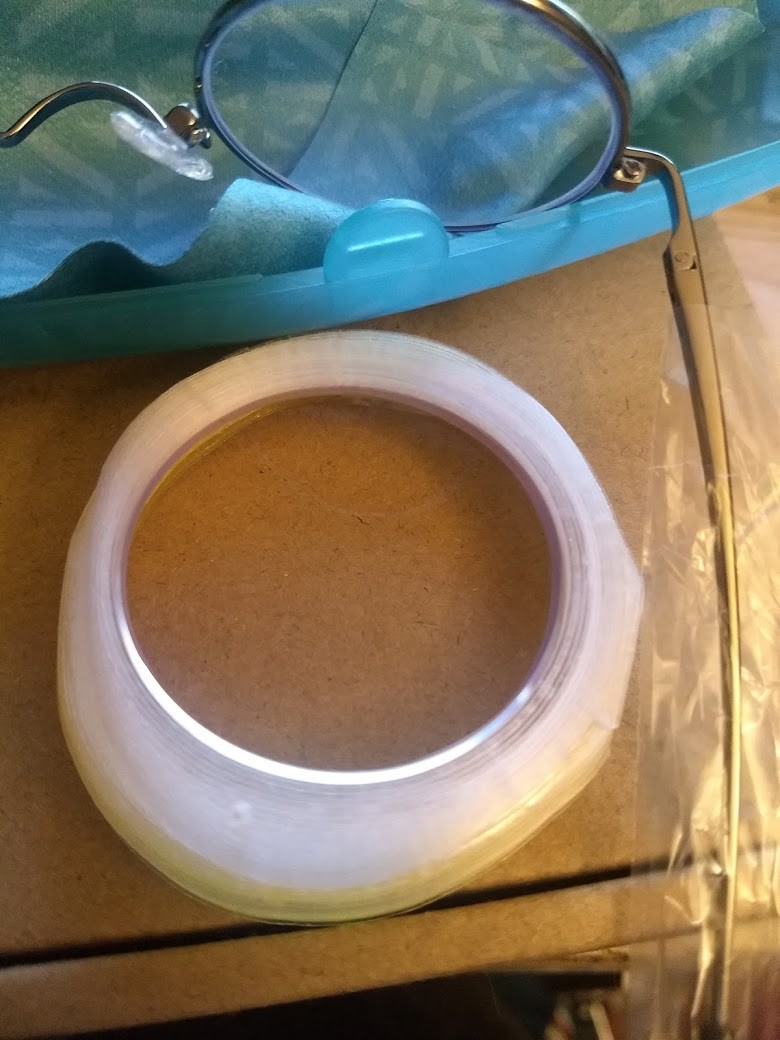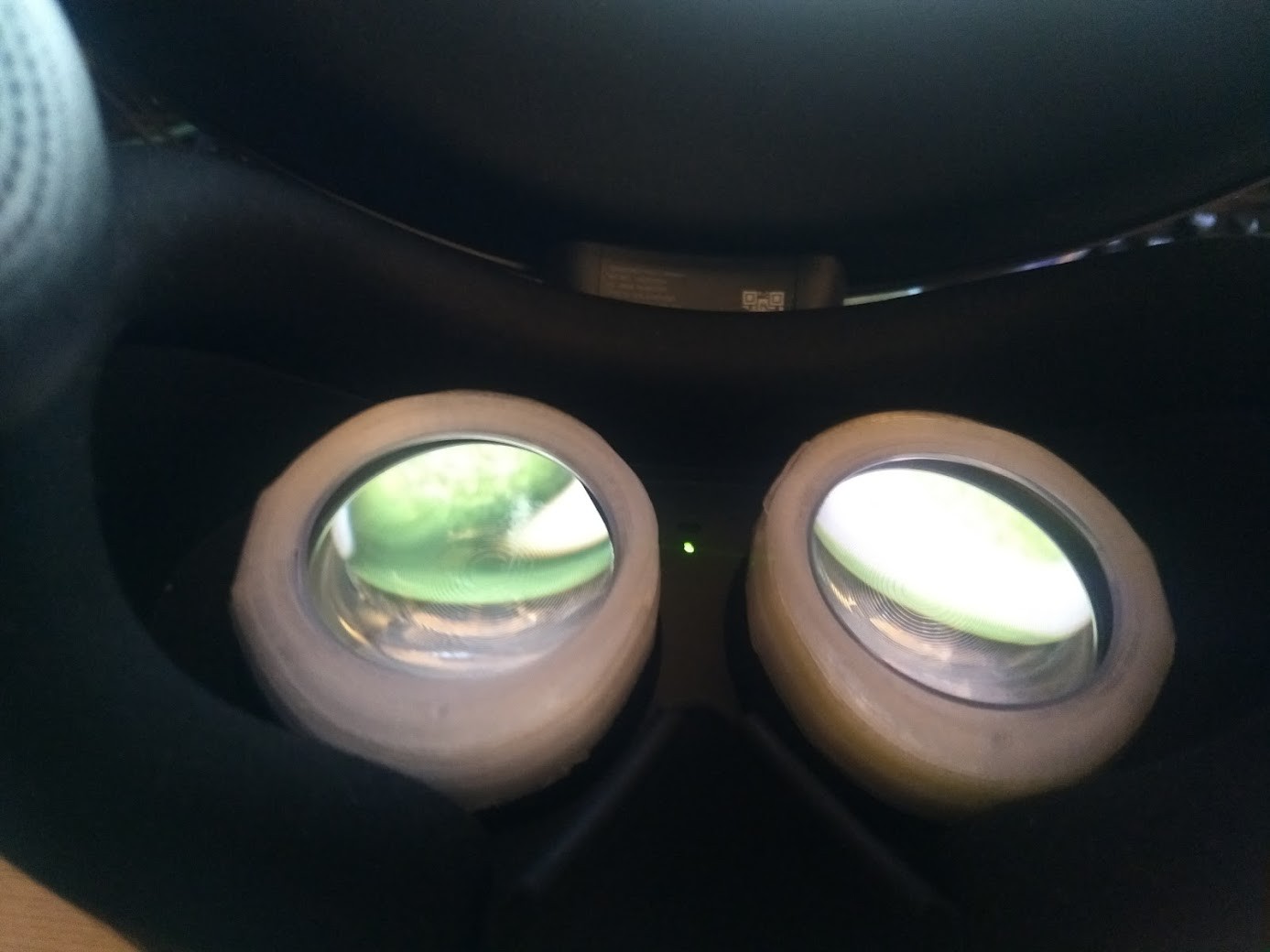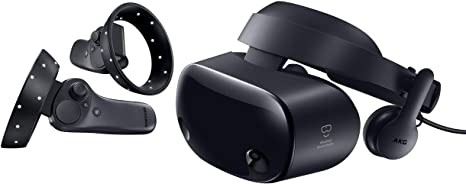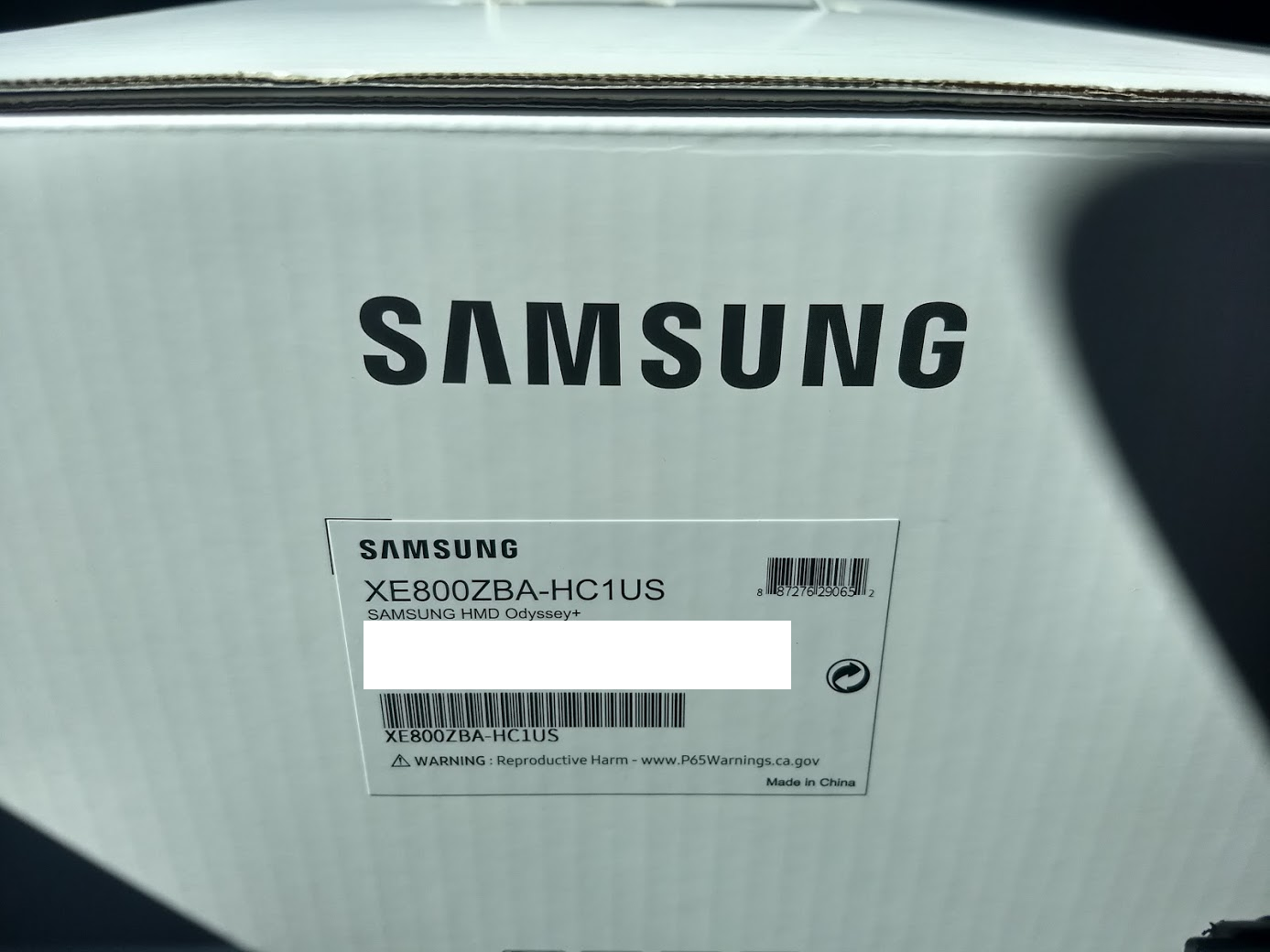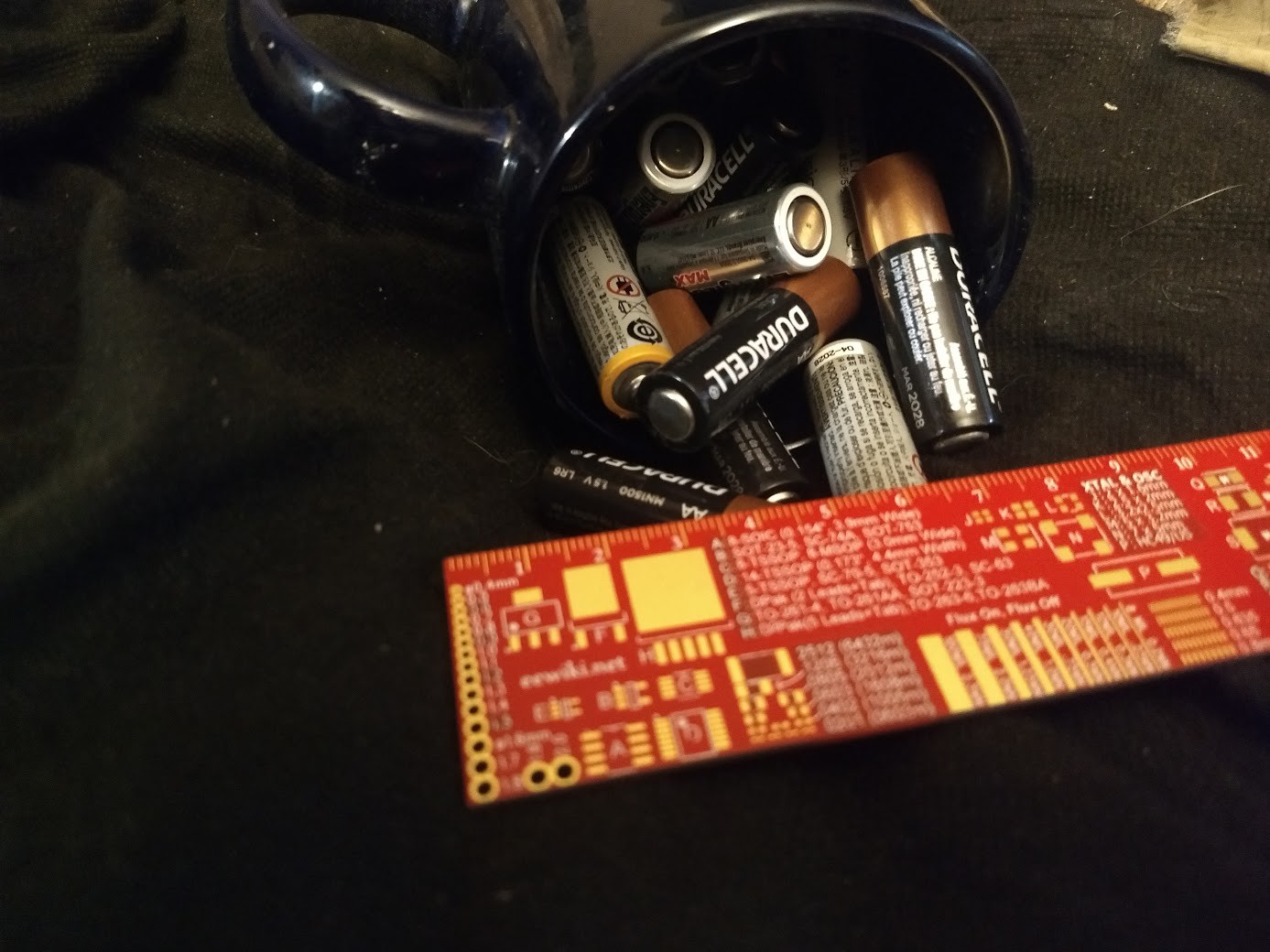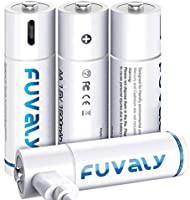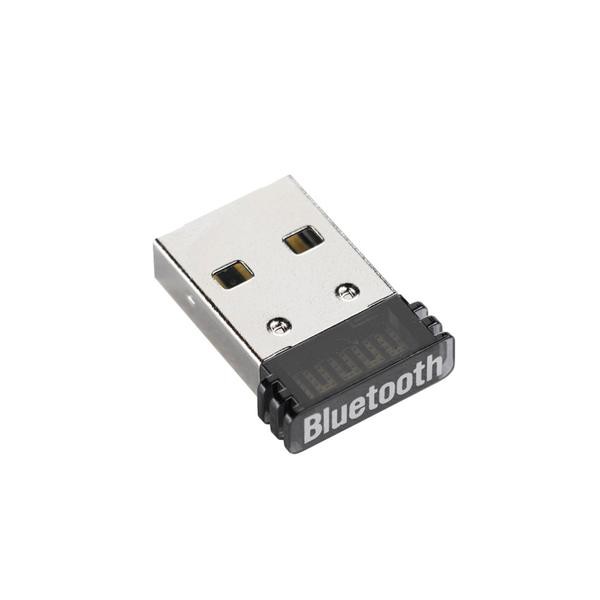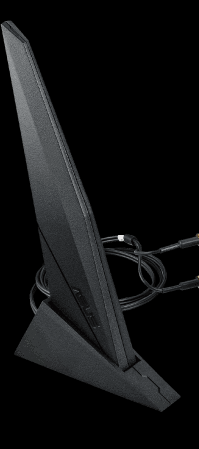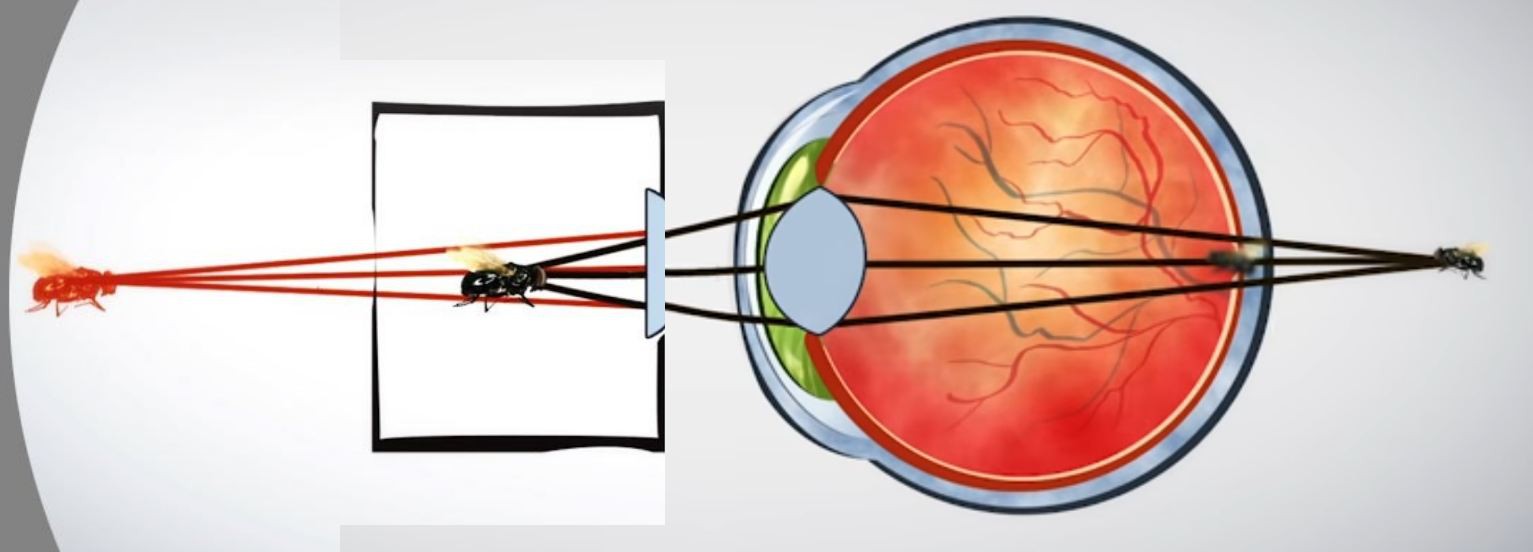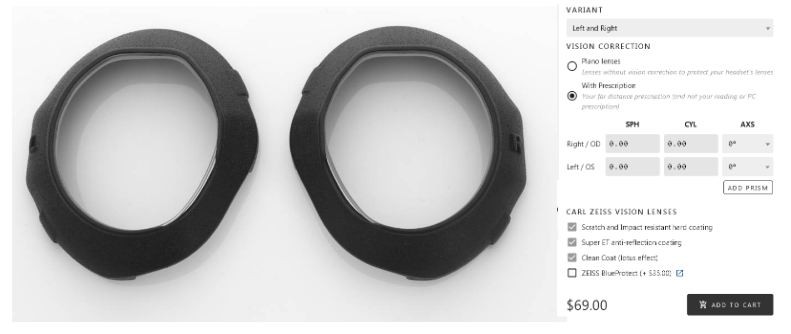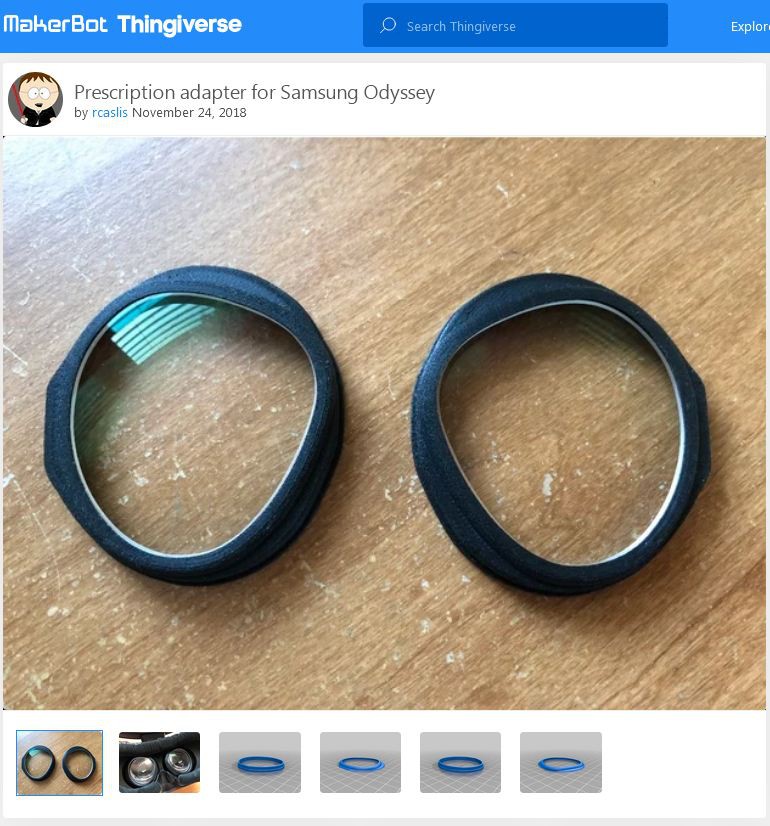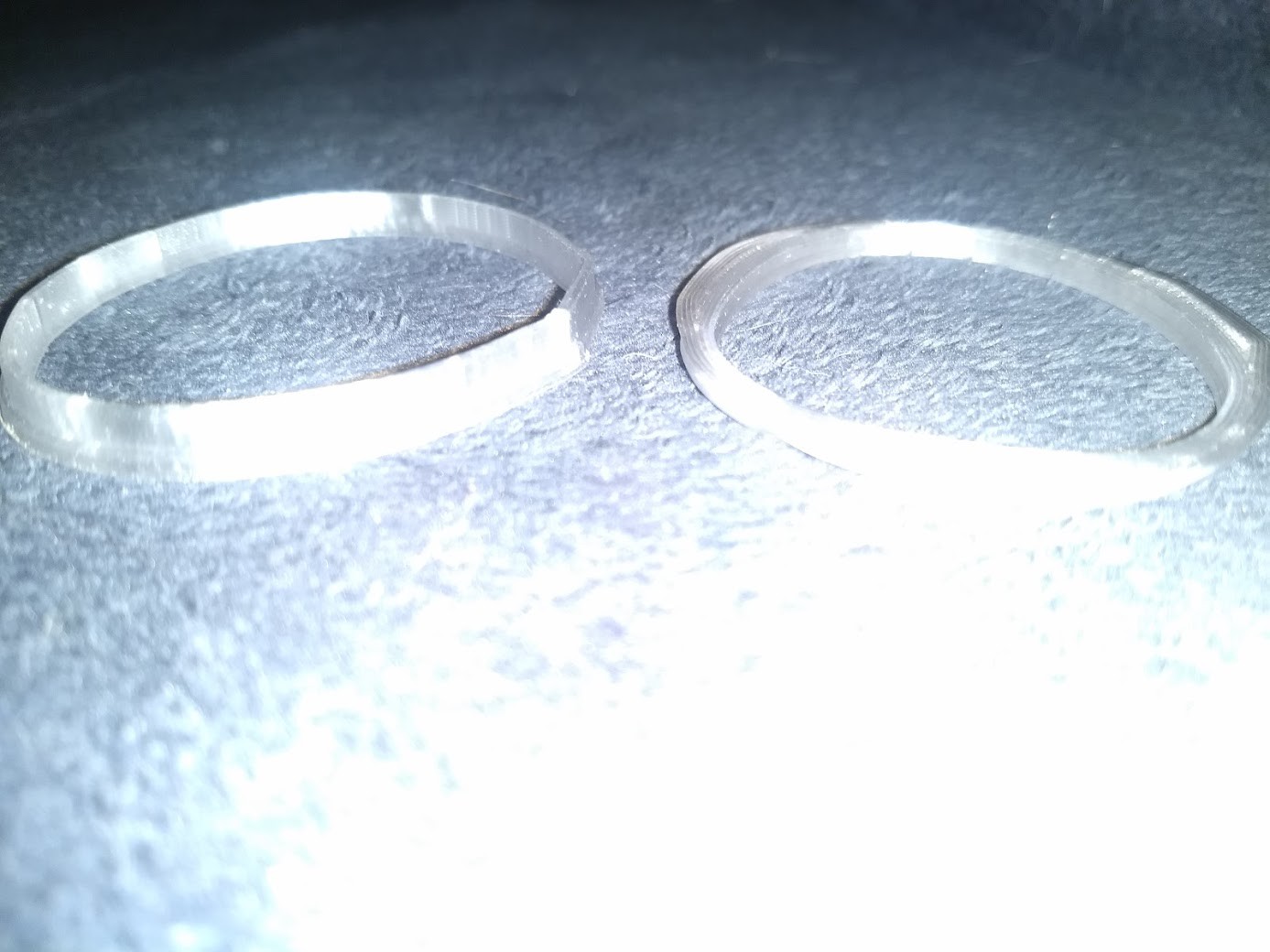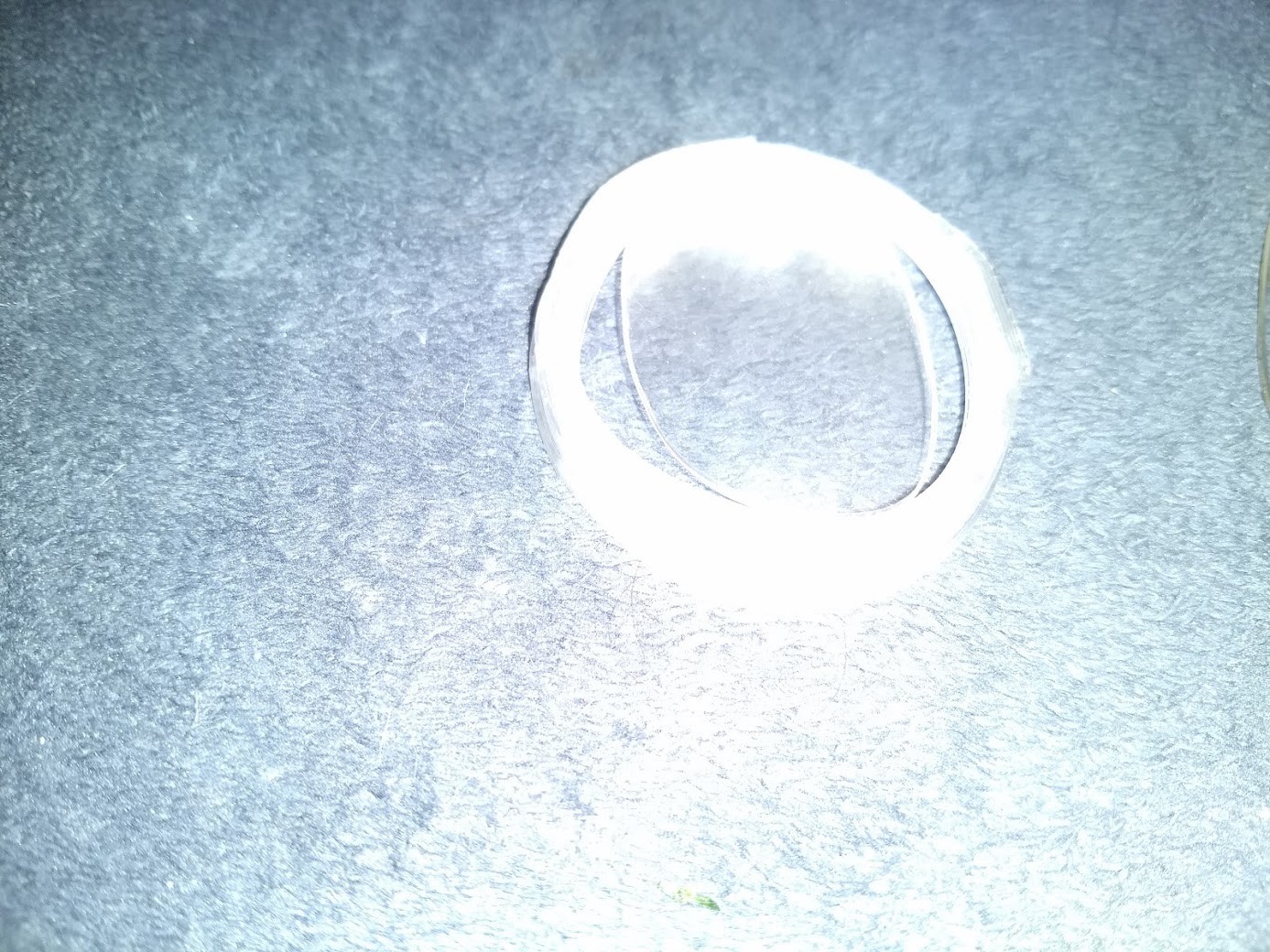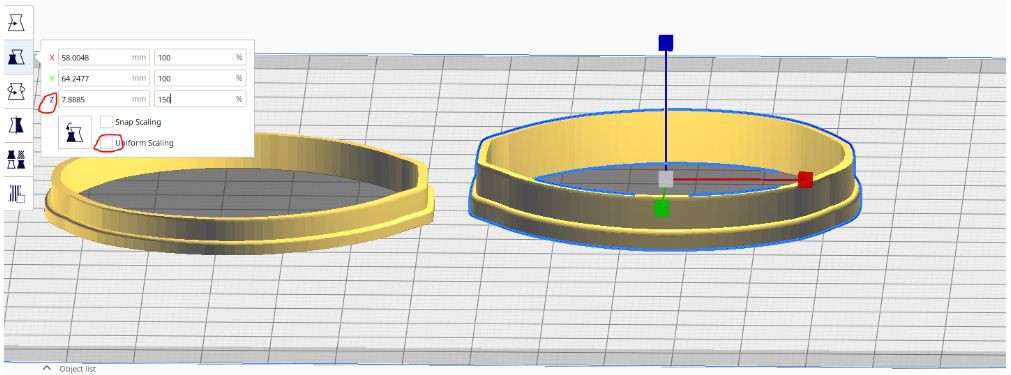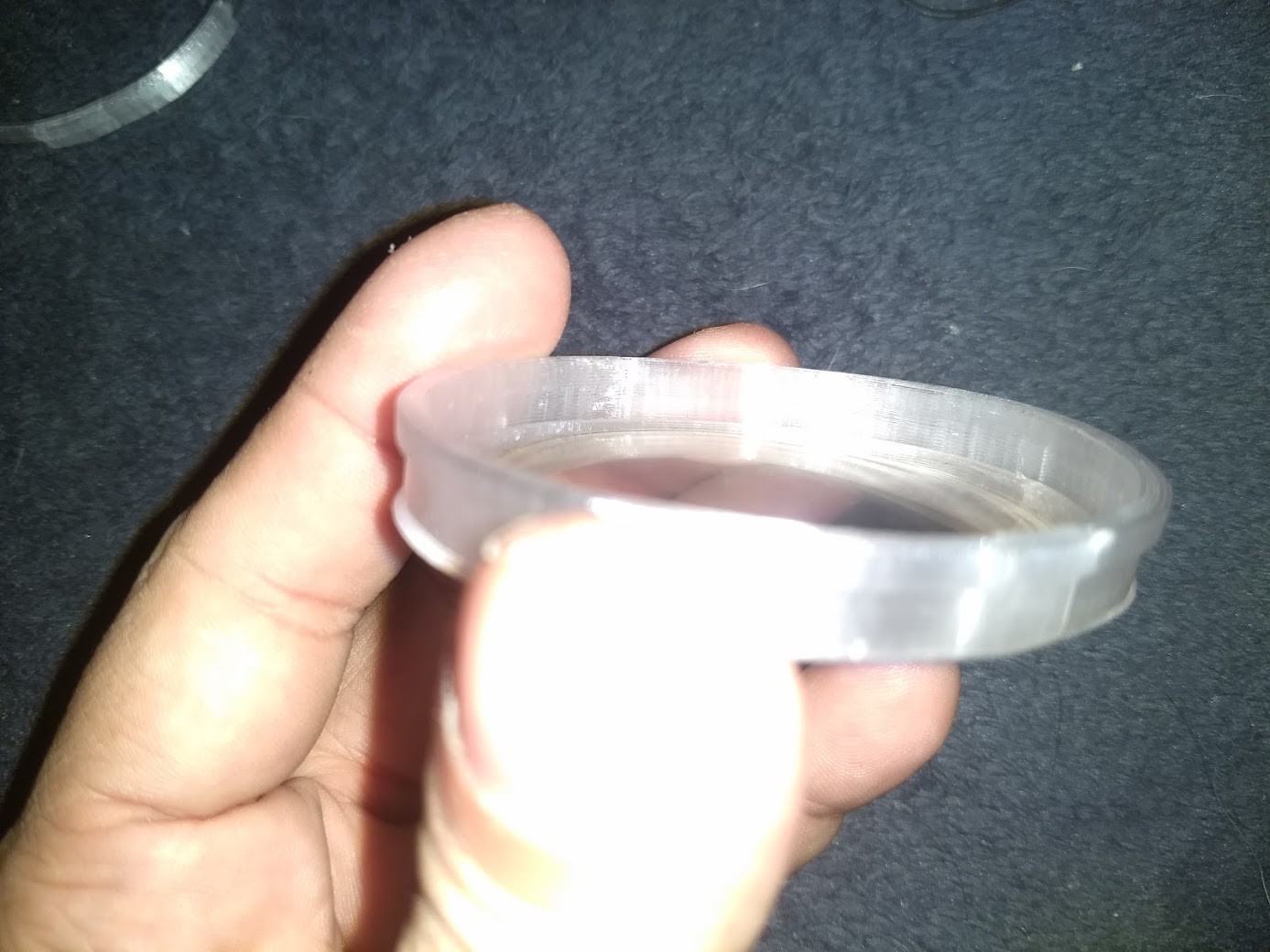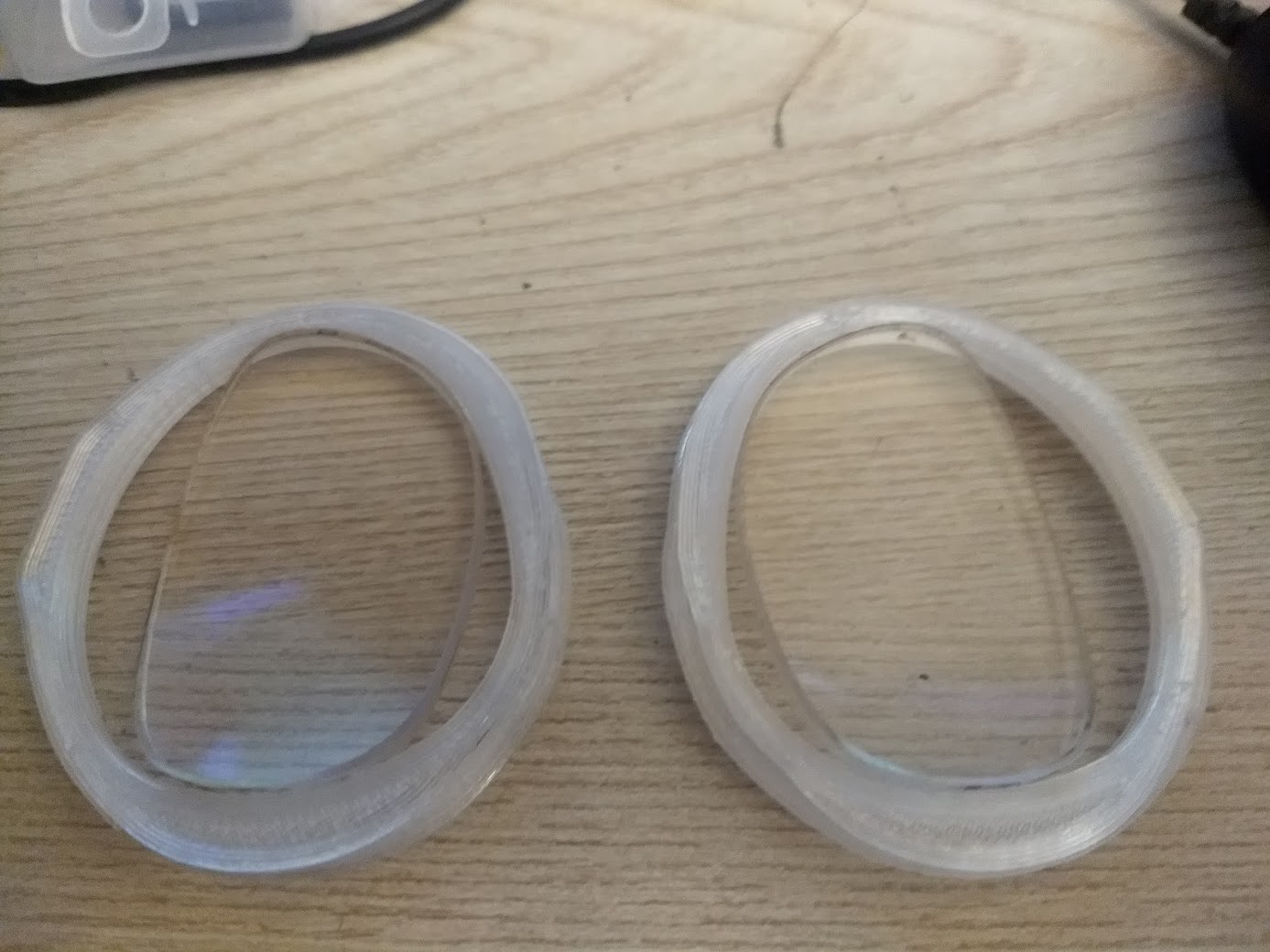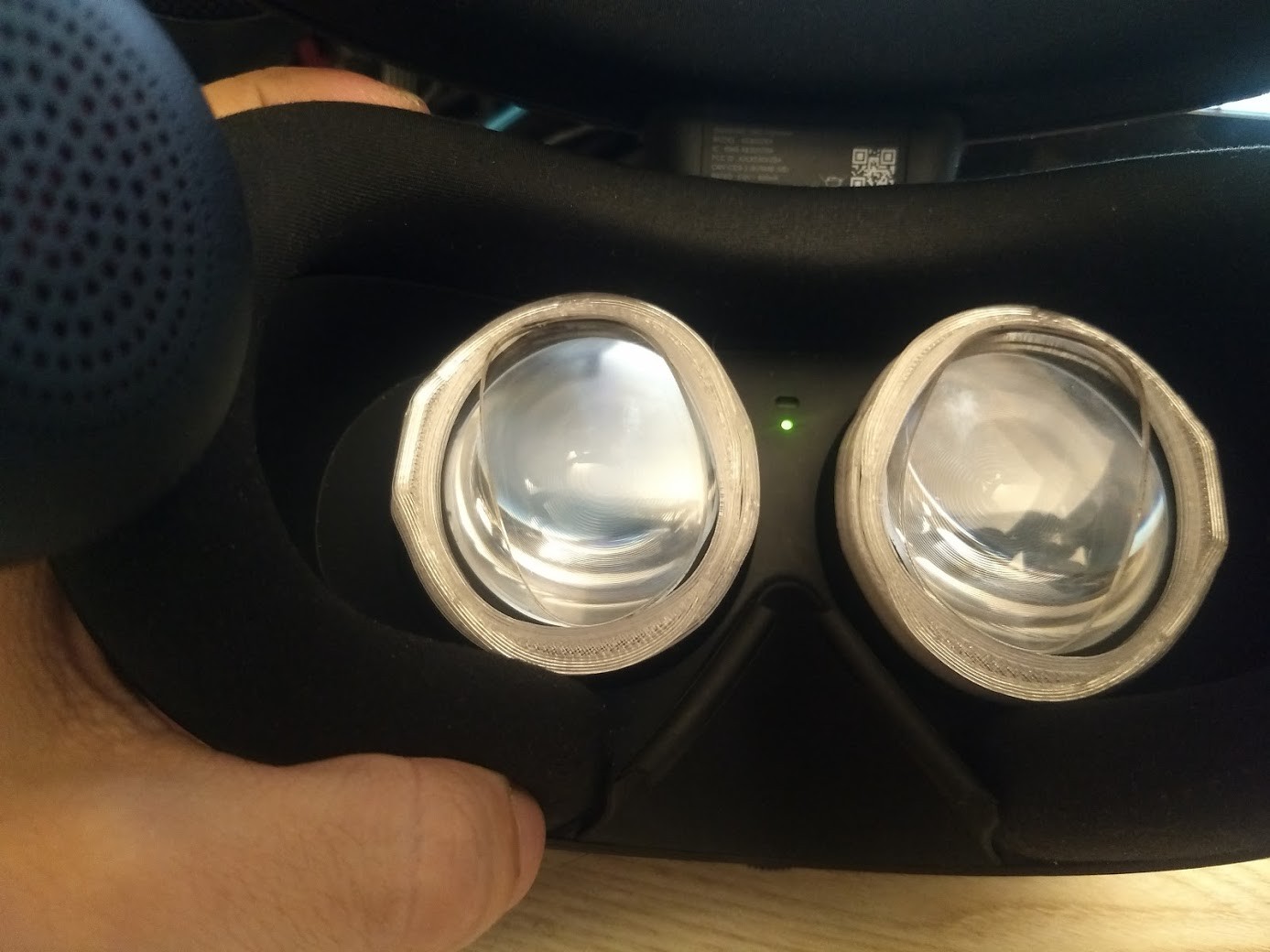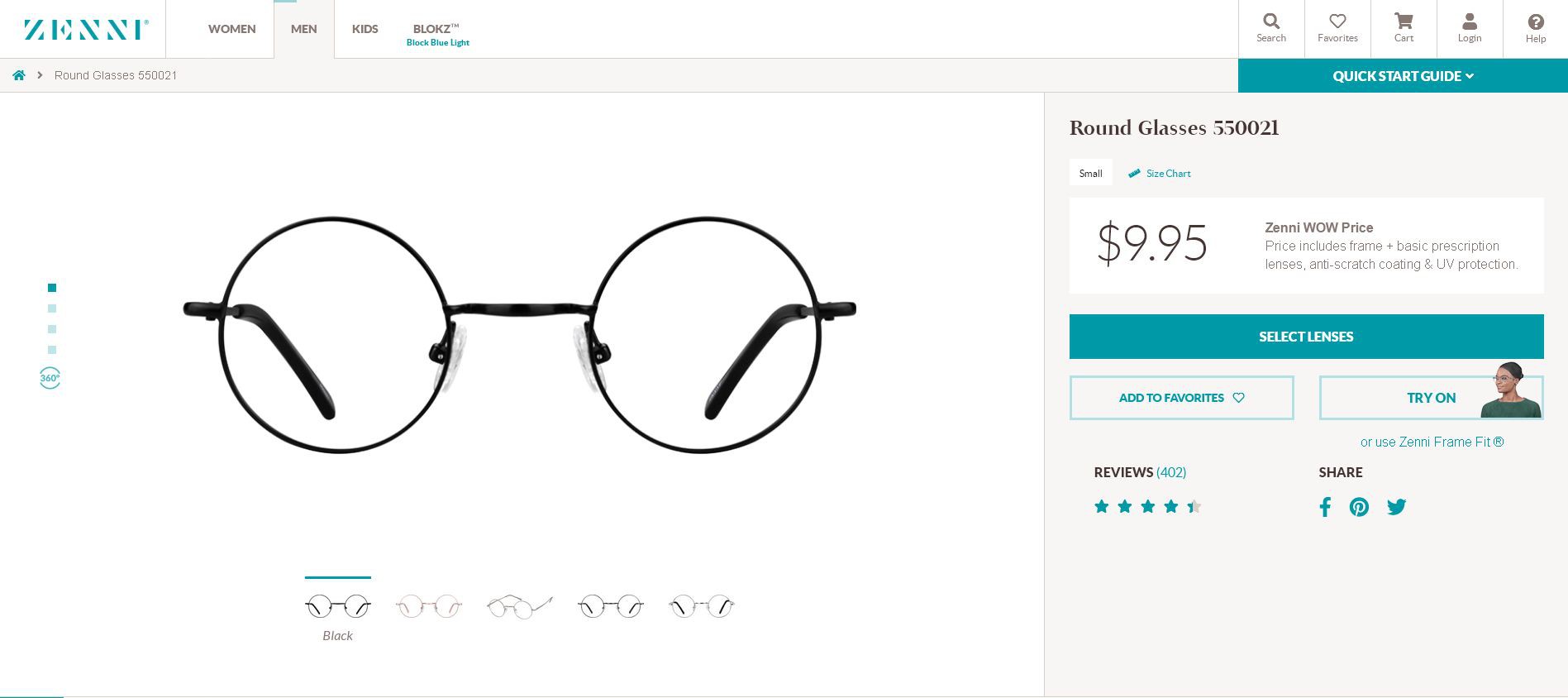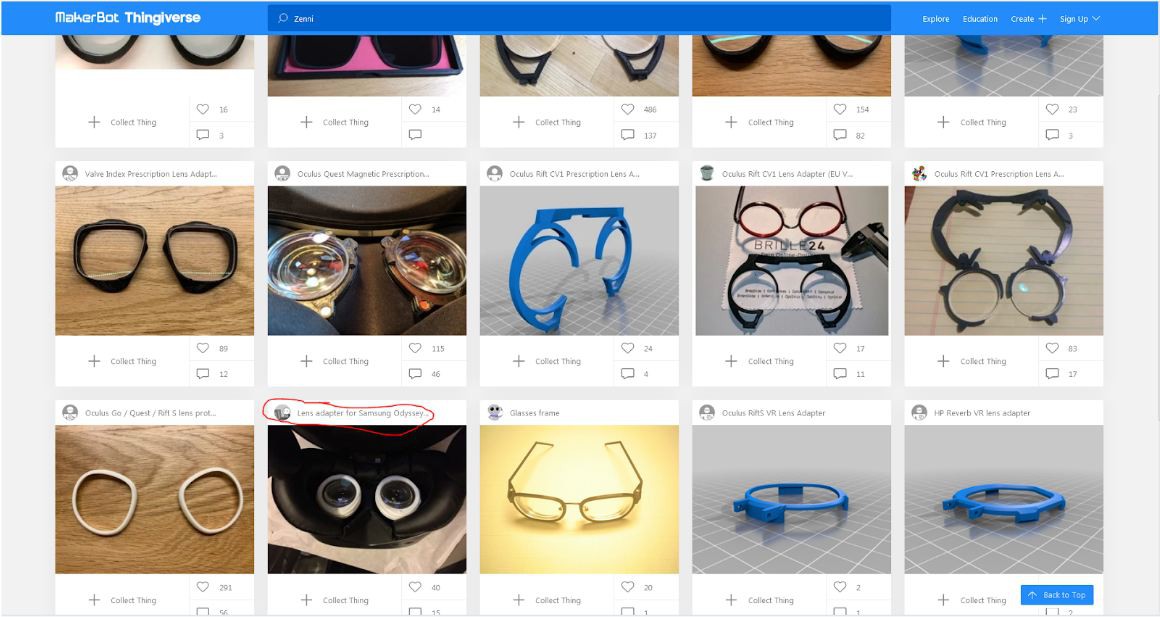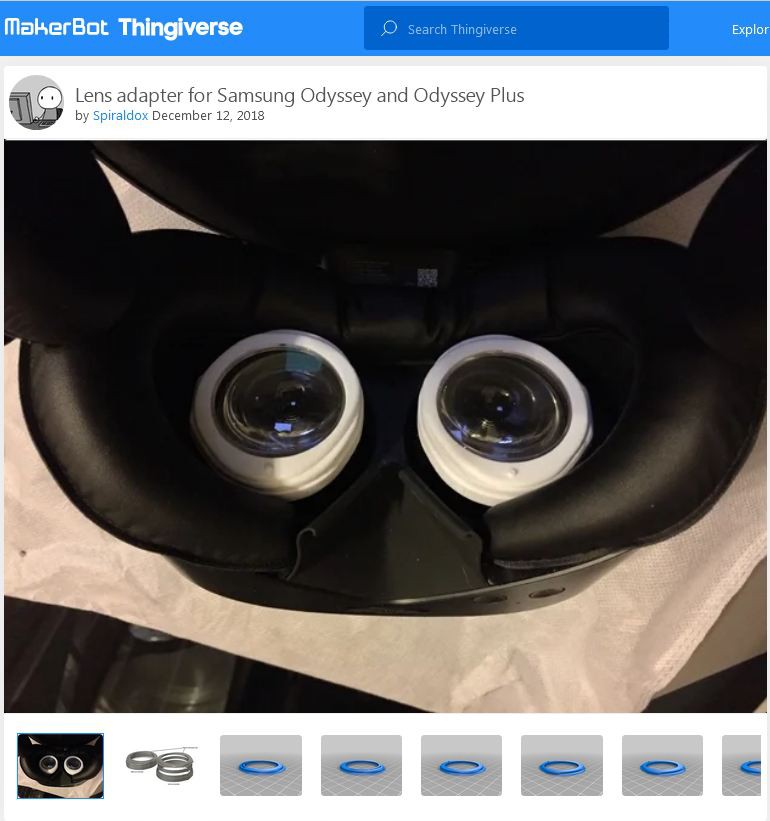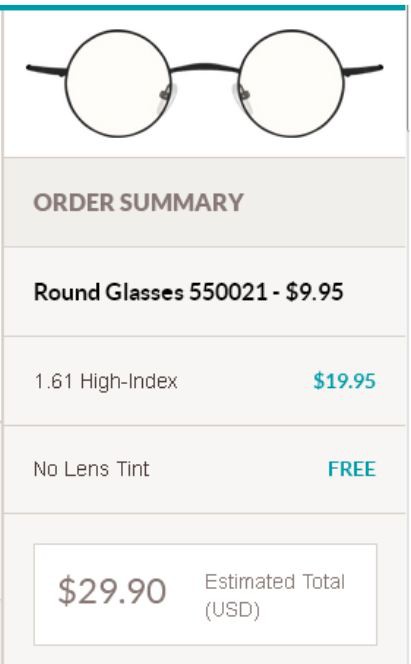-
August 31, 2020 - 02
09/15/2020 at 07:51 • 0 commentsI am into this project for less than $40! That's if you include the plastic I used (Overture clear PETG) and the power I used, plus the eyeglasses. I'm feeling pretty good about this.
![]()
I would like to mention now that it is an amazing feeling when you are using your 3D printer to print a part that is not made to fit to your or another 3D printer. It feels like you have accomplished something amazing!
Now I am going to show you me putting the "v3" adapter I didn't end up using together, since I did not take any pictures of putting the original set together which I popped the lenses into and worked fine. The process is exactly the same however.
![]()
This is one of the top parts and one of the bottom parts. We will be gluing these together with super glue. Do not have the spacer inside the assembly, you do not want to accidentally glue that part in!
![]()
The best way for me was to first dab some glue on the perimeter, hold it together like a tack weld, then go in from behind and give the seam a good once over with the superglue.
I let these cure for more than a day before trying any of them, as I had been warned that superglue has the ability to fog up optics and leave a layer you cannot remove easily (The same effect that happens when they use superglue fumes to lift fingerprints applies here, and you don't want to ruin your optics because you couldn't wait a bit!)
![]()
My glasses arrived, and quite frankly were amazing. They fit well, I could see through them wonderfully, and they felt like they were high quality. Probably will do this next time I need actual glasses again.
![]()
Prior to taking these apart, I marked the bottom of each lens with a different colored marker so I could identify both RIGHT and LEFT lenses by their color, and the bottom of each lens by the dot so I could match the orientation. Orientation of these lenses is important.
![]()
The glasses come apart with a small Phillips head screwdriver, and I was careful not to scratch anything or strip any screws. I am also wearing a pair of cotton inspection gloves so I don't scratch any lenses while I am working with them.
![]()
I pulled out one lens at a time, and press fit them into their holders using the 'bottom' notch as my reference compared to the dot I put on the lens.
![]()
Rinse and repeat for the other side.
![]()
The spacer goes between the "Top" piece and the actual protrusion on the headset lenses. That way it lifts it up a bit, you might have to change the thickness of that spacer to get it where it's perfect.
I have to say I have zero complaints, this has been absolutely fantastic, and now I can just put my VR headset on and rock out without any of the annoyances or harm of wearing eyeglasses inside the headset. I can use these lenses with different adapters should I want to try out a different headset too.
If you have a VR headset and want a cheap pair of lenses to use with it, this is a great way to go, and do some searching on thingiverse, you will likely find something that works for your headset and gives you the right 'cheap' eyeglasses to order for the best fit!
Thank you to everyone who inspired this and to who provided me all the files and knowledge I needed to pull this off. I hope my documenting my journey inspires others to do similar and gain a much better VR experience for themselves along the way.
Let me know if you have any questions!
-
August 18, 2020 - 01
09/15/2020 at 07:21 • 0 commentsBack in May 2019 I purchased a Samsung Odyssey Plus VR headset for myself to go along with the new gaming computer I was building. I primarily bought it for it's high refresh rate for the time (90hz) and it's high resolution for the time (1440x1600 per eye) amoled displays, for what was a dirt cheap price of $270 US. To be frank, it really holds up well today!
![]()
![]()
Up until recently I have not used it too much myself.
I was able to set it up at my hackerspace for fun events such as the rebroadcasting of the moon landing and other things. We were able to run games on it as well as that really cool Apollo 11 VR experience, and it gave me a real appreciation of the technology, but also showed me a few limitations I couldn't get around easily, or so I thought.
![]()
For an instance, the controllers sucked down batteries at such a rate that it would quickly become an environmental hazard. I found out that the easy solution, using NIMH batteries was not possible due to a general oversight of the Windows Mixed Reality platform. The hand controllers did not like anything below 1.5volts per cell on their batteries, and a fully charged NIMH would read low battery, cut off quick, or leave me with reduced and awful tracking.
![]()
I found out later that a bit of the severe tracking issues that I had were related to my Bluetooth adapter not playing ball with the trackers, and this was also contributing to the radios in the controllers using even more power than they would have exasperating how poor the battery life was. The ultimate battery fix was to buy USB rechargeable lithium batteries which have a buck converter to keep them at 1.5V as long as the battery has enough juice to run it. The lifetime I gain is easily worth the inconvenience of them dropping dead without warning, as my pile of dead alkalines would easily weigh as much as I do by now!
![]()
the bluetooth fix was to use a different adapter entirely. Neither of those are worth a post by itself in my book.
![]()
The funny thing was I was using a crummy external USB adapter due to losing the antenna for the one that was built into my motherboard.
![]()
Once I found the antenna that came with my motherboard, my trackers/controllers worked about a million times better than they did with the little bluetooth dongle.
The biggest issue and hurdle though for me was the fact that I could not see at all at any kind of distance. In the normal world my nearsightedness is so bad that everything over a foot is basically a blur. My close up vision is amazing, so my (completely wrong) thought was the idea that I was going to be right against a screen, so everything should be in focus... WRONG!!! Turns out that the fresnel lens inside of most VR headsets focuses at/around 2 Meters. So if you have problems seeing things at that distance in real life, the same problems will show up in VR too! I am of course overgeneralizing things here, though we have enough to go on.
You can wear your glasses inside of VR, but I have had several issues with it that I will try to lay out using silly (and not so silly) images I found on the interwebs:
You now have 6(!) that's SIX, I mean six surfaces that can get covered with dirt, sweat, hair and whatever else happens inside your VR headset. That is to say the fresnel lenses themselves (the side facing you has a surface per lens), and your eyeglasses both front and back. You best have the costco bulk pack of lens wipes (which you will be pulling out every 5-10 minutes) if you want to continue seeing clearly in VR. This is more than a little annoying.
The bridge of your nose and your ears will likely take a beating as things that shouldn't put pressure on your glasses and force them into horrible positions. This really hurts, especially if you are using VR for hours on end.
Your eyeglasses can actually hit the fresnel lenses, and at the very least your fresnel lenses could be scratched (mine are to some degree), and your eyeglasses could become scratched too if they are not made up of tougher stuff than your VR headset's fresnel lenses. This is a completely awful thing.
You could solve this with contacts, laser eye surgery, or by buying a snazzy pair of slide in/snap in VR Headset lenses. I didn't feel like starting a revolution, changing my daily habits or dropping $10K on a cheaply made laser eye burner outer thingy (though it would be a completely hacker way to lose one's vision!), so the lenses sounded like an amazing option!
Oh that's right, I saved money on my headset, there aren't really any drop-in options! Whoops!
So I googled away and tried to find alternate choices, and I did find a few leads!
I quickly found a company that was offering what I thought I was looking for, and I noticed that the solution appeared to be 3D printed. I thought to myself, hey I have a working 3D printer, and plenty of PETG!
I kept googling and found a set of plans for sale, and a curious mention of buying a set of "Zenni" branded glasses of a specific model to actually use with the lens adapter (550021). I didn't know how useful this interesting tidbit of info would become later! I decided to search on thingiverse before hitting that buy button though, when I stumbled upon this solution:
https://www.thingiverse.com/thing:3237026
by the maker rcaslis on thingiverse.
These look darn good, and the person who made it stated that they made it to replace a set of the lenses/adapters I was about to order since they were not up to the standards they wanted. This design uses a oculus lens from the first company I found that made drop-in and snap-in lenses for a lot of VR headsets, just not mine. I was fully willing to spend the $45 per lens that would have cost me to go that route, but something inside of me wanted to know what the experience would be like, so I actually printed a copy of these adapters out!
![]()
I put the pieces together, and clearly this looked like it could be a solution, then I had an absolutely crazy idea, what if I take apart a set of my old eyeglasses and use those instead! I could really maybe try this out for real before I go all the way!
![]()
A little fiddling and I had made myself a makeshift set of VR lenses. Only one problem though:
![]()
The coke bottle lenses I am used to wearing are way too deep for it to clear. These arc in way too much.
Cura to the rescue:
I was able to scale the Z axis to 150% and make my chances of success better.
![]()
Annoyingly though this was still not going to quite clear. I decided to flip the lenses around. I will be able to see, but annoyingly the correction for my astigmatism is going to work in reverse(Oh no!)
![]()
Still it's a prototype, so this is just to see if the concept is sound and would work.
![]()
I have to say, I was blown away. I could see! These were not the most up to date prescription, and these lenses are in awful condition, but it showed me that it could be done, and with excellent results!
So I was ready to order the lenses from the place that had the snap-in lenses, but I had remembered that bit about the Zenni glasses...
I thought, wait, really? How can they be this cheap, and I noticed just how large the lenses were. These would be perfect for VR I had thought, and many other people had thought it too. Armed with this knowledge, I went back to thingiverse and did a new search, this time just using the brand name of these glasses, and I found stuff I had totally missed with my previous search! TLDR; thingiverse's search engine is garbage!
Oh look here! Let's go check it out!
https://www.thingiverse.com/thing:3279208
by the maker Spiraldox on thingiverse
I've changed my mind now, I want to get the cheap glasses and make this adapter, and I can use my hacked together ones in the meantime to tide me over. Being able to see in VR without wearing eyeglasses inside the headset is pretty awesome!
I put in an order for the glasses, they did come up quite a bit due to my prescription, and they offered me a $5 blue blocking filter lens for $5 extra when I attempted to check out without it, so I figured $35 was an amazingly far cry from the $175 glasses I had just purchased for myself from the place I had been going for years. (The price last time I got glasses was easily 2.5x cheaper!) So $35 for a set of eyeglasses was amazing, I will probably order them online like this from now on to be honest! Not sure what's up with the cost of eyewear in the United States, but it's practically robbery now. I think that's more than enough for this log, I will finish it in the next one.
Hacking VR: Prescription lenses & adapters.
I'm nearsighted and my VR headset doesn't have a provision to correct for it. Wearing glasses inside a VR headset was an awful experience!
 cprossu
cprossu